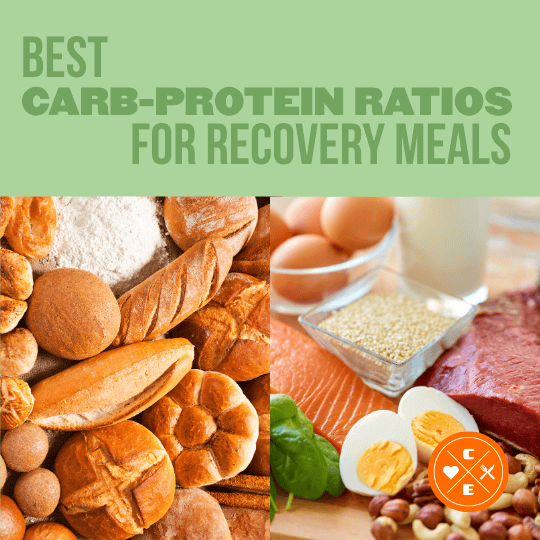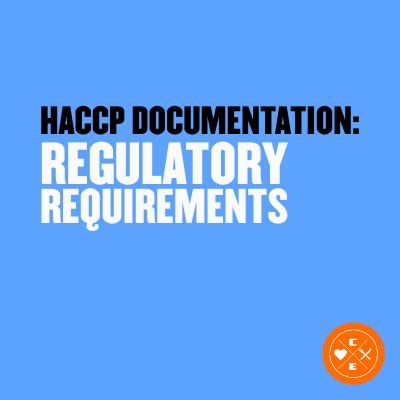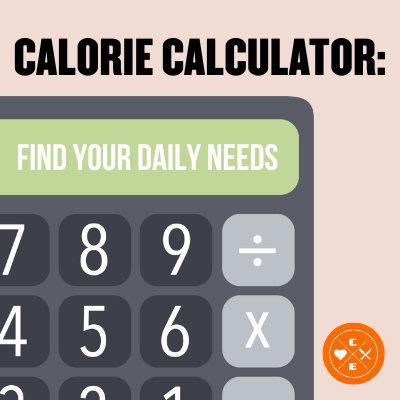Best Carb-Protein Ratios for Recovery Meals

Jason Nista
Nutrition
09/02/2025 9:26am
14 minute read
Table of Contents
Looking to optimize your post-workout recovery? The right carb-to-protein ratio can make a big difference.
Here’s what you need to know:
- 4:1 ratio is ideal for endurance athletes to quickly restore glycogen and repair muscles.
- 2:1 or 3:1 ratios work better for strength training or high-intensity workouts, focusing more on muscle repair.
- Timing is key - consume recovery meals within 30 minutes to 2 hours post-exercise.
- Start with fast-digesting carbs (like bananas or white rice) immediately after training, then shift to complex carbs (like quinoa or sweet potatoes) for sustained energy.
- Adjust portions based on your body weight and workout intensity for the best results.
Pro Tip: Prepping meals ahead or using ready-made options like Clean Eatz Kitchen can save time while keeping your recovery on track.
The right balance of carbs and protein fuels energy restoration and muscle repair, ensuring you're ready for your next workout.
Research Findings on Recovery Ratios
The 4:1 Ratio for Endurance Athletes
Studies show that a 4:1 carbohydrate-to-protein ratio is highly effective for endurance athletes, helping to quickly replenish glycogen stores and repair muscles. This ratio is particularly useful for those involved in long-duration activities like marathon running or cycling, where restoring energy and repairing muscle tissue are equally important. The higher carbohydrate content focuses on replacing depleted energy, while the protein component supports muscle recovery after prolonged exertion. Research also highlights that different types of workouts may benefit from varying nutrient ratios.
Ratios for Strength and High-Intensity Training
For those engaged in strength training or high-intensity interval training, a 2:1 or 3:1 carb-to-protein ratio is often recommended. These ratios provide a higher proportion of protein, which is essential for muscle repair and building strength after resistance-based workouts. Meanwhile, individuals performing moderate exercise might find a 3:1 ratio more suitable, as it balances energy restoration with muscle maintenance.
Tailoring Intake to Body Weight
While understanding recovery ratios is helpful, the total amount of nutrients consumed relative to body weight is just as important. Athletes should adjust their carbohydrate and protein intake based on their body weight to ensure they’re meeting their recovery needs. Timing also plays a crucial role - consuming these nutrients soon after exercise can maximize glycogen restoration and muscle repair. Regularly following these strategies can significantly enhance recovery and overall performance.
When and How Often to Eat Recovery Meals
Post-Workout Timing Guidelines
The "anabolic window" is the period right after exercise when your body is primed to absorb nutrients for recovery. Studies suggest that eating a recovery meal shortly after your workout can speed up glycogen replenishment and muscle repair. This is because, during this time, your body experiences increased blood flow and heightened insulin sensitivity, making it easier to absorb nutrients. Waiting too long to refuel can reduce these benefits, especially for those who train frequently or engage in intense or long workouts that significantly drain energy reserves.
To maximize recovery, consider breaking your post-workout nutrition into smaller portions instead of consuming it all at once.
Multiple Small Meals vs. One Large Meal
Research highlights that spreading your recovery nutrition across several smaller meals can be more effective than eating one large meal. This method helps your body process nutrients more efficiently, keeps insulin levels steady, and continuously supports glycogen replenishment - all while avoiding any potential digestive discomfort. A practical way to apply this is to divide your recovery meal into portions and space them out during the recovery period. Just make sure each portion follows your ideal carbohydrate-to-protein ratio for optimal results.
Simple Timing Strategies
Nailing your nutrient timing can be as simple as planning ahead. Preparing your recovery meals the night before ensures you're ready to refuel, whether you're working out early in the morning or on the go. For athletes who train multiple times a day, staggered meals can help maintain energy and bridge the gap between sessions.
If you're looking for a convenient solution, Clean Eatz Kitchen offers portion-controlled, high-protein meals tailored to various training and recovery needs. And if you can't eat immediately after your workout, aim to consume a balanced mix of carbs and protein as soon as you can. Even minor adjustments, like adding a light snack between meals, can make a big difference in maintaining energy and boosting performance.
Eat This Many Grams of Carbs and Protein After A Workout
sbb-itb-1989a25
Top Carbohydrate Sources for Recovery
When it comes to post-workout recovery, timing and ratios matter, but the type of carbohydrate you choose can make a big difference too.
Fast-Acting Carbs for Quick Recovery
After a tough workout, your muscles are craving glycogen. Fast-acting carbs are your best friend here, as they’re quickly absorbed and deliver glucose right when your body needs it.
Some go-to options include white rice and pasta, both of which have a high glycemic index and are easy to digest. If you’re looking for something even more convenient, sports drinks like Gatorade or Powerade are a solid choice. A standard 20-ounce bottle has about 35 grams of carbohydrates, making it a quick and efficient recovery option.
Other fast-acting carb sources include bagels (around 45 grams of carbs per serving) and bananas (about 27 grams of carbs, plus a dose of potassium to help with muscle function). For something a bit more versatile, sweet potatoes are a great pick. While technically a complex carb, they strike a balance between immediate and sustained energy, making them ideal if your recovery window stretches beyond the first half-hour.
Choosing Quality Carbs with Proper Portions
Not all carbs are equal, especially when it comes to recovery. While fast-digesting carbs are important right after a workout, nutrient-dense options are key for keeping your energy levels steady and supporting overall performance.
Portion control is also crucial to hit your desired carb-to-protein ratios. For instance, one cup of cooked white rice has about 45 grams of carbs, while one cup of cooked quinoa provides roughly 39 grams, along with extra protein and fiber. Whole grains like brown rice, quinoa, and oats are excellent for recovery meals consumed 30–60 minutes post-workout. These options not only provide sustained energy but also come packed with B vitamins, which help with energy metabolism.
Here’s a quick recovery strategy: focus on simple, fast-digesting carbs in the first 30 minutes after exercise to replenish glycogen stores. Then, as you move into the 1–2 hour window, incorporate complex carbs for prolonged energy and added nutrients. For example, a recovery meal with 60 grams of carbs and 15 grams of protein hits the ideal 4:1 ratio and provides around 300 calories - perfect for fueling your muscles.
Clean Eatz Kitchen Recovery Meal Options
![]()
If meal prep feels like a hassle, having ready-made options can make sticking to your recovery plan much easier.
Clean Eatz Kitchen offers meal plans designed specifically for recovery. Their High Protein Meal Plan, priced at $59.95, includes chef-prepared, portion-controlled meals that target specific macronutrient needs. These meals arrive frozen for freshness and are microwave-ready, so you can have a balanced recovery meal in minutes.
For more variety, their rotating monthly menu ensures you won’t get bored, while the Build Your Meal Plan option (available for $53.95) lets you customize meals to match your workout intensity and recovery goals. Plus, there’s no subscription required - order when you need it, whether you’re in the middle of a heavy training cycle or taking it easy.
Having pre-portioned, nutrient-packed meals on hand eliminates guesswork, helping you stay consistent with your recovery routine and get the most out of your training.
How to Plan Your Recovery Meals
Getting your post-workout meals right isn’t just about hitting the right nutrient ratios - it’s about planning ahead to make recovery seamless and consistent.
Measuring and Portioning for Balanced Ratios
To ensure you’re meeting your carb-to-protein targets, precision is key. A kitchen scale can help you measure portions accurately, especially if you’re aiming for the commonly recommended 4:1 carb-to-protein ratio. For instance, one cup of cooked white rice contains about 45 grams of carbs. To match the 4:1 ratio, you’d pair it with around 11 grams of protein.
Food labels are another handy tool for fine-tuning your portions. Take Greek yogurt, for example: a standard 6-ounce container typically offers 15–20 grams of protein and 15–25 grams of carbs, depending on the brand. Pair that with a medium banana, which has about 27 grams of carbs, and you’ve got a simple, balanced recovery snack. Pre-planning these combinations ensures you’re always ready to refuel after a workout, saving you time and effort.
Once you’ve nailed down your measurements, incorporating convenient recovery options becomes a breeze.
Simplify Recovery with Clean Eatz Kitchen
When life gets hectic, having ready-made meals on hand can make all the difference. Clean Eatz Kitchen offers chef-prepared meals that take the stress out of post-workout nutrition.
Their High Protein Meal Plan, priced at $59.95, includes portion-controlled, fully cooked meals that arrive frozen, so you’re never without a recovery option. The menu rotates monthly, giving you the flexibility to adjust your meals based on your training needs - whether you’re focusing on higher carbs or more protein.
If you prefer more control, their Build Your Meal Plan option, available for $53.95, lets you select meals tailored to your specific macronutrient goals. These microwave-ready meals don’t require a subscription, making it easy to enjoy a balanced recovery meal in just a few minutes - perfect for staying on track during that crucial post-workout window.
These convenient options make it easier to stick to your nutrition plan day after day.
Staying on Track with Recovery Nutrition
Consistency is the backbone of effective recovery. While occasionally missing your post-workout meal won’t ruin your progress, skipping it regularly can impact your performance over time.
To make recovery easier, consider batch-prepping ingredients. Spend a little time over the weekend cooking staples like rice, quinoa, or sweet potatoes, and portion them into containers with your target carb amounts already measured. Do the same with proteins like grilled chicken, hard-boiled eggs, or even Greek yogurt. This way, after a workout, all you need to do is combine your pre-measured ingredients for a quick, nutritious meal.
It’s also smart to keep backup options on hand. For example, whole grain bread with peanut butter and a banana can be a quick, balanced recovery meal when you’re in a pinch. Regularly monitor how your body responds to your recovery meals and fine-tune your carb and protein intake as needed to support your performance and goals.
Getting the Most from Your Recovery Nutrition
Recovery nutrition isn't just about eating after a workout - it's about understanding your body's needs and sticking to a plan that works.
Key Takeaways
The 4:1 carb-to-protein ratio is a well-known guideline for endurance recovery. For strength-focused athletes, slightly higher protein ratios, like 3:1 or 2:1, might be more effective. But don’t forget: the total amount of nutrients you consume is just as important as the ratio itself.
Timing is everything. Your body is most ready to absorb nutrients within the first 30 minutes to 2 hours after exercise. This window is critical for replenishing energy and starting the repair process.
When it comes to carbohydrates, quality matters. Quick-digesting carbs like white rice or bananas are great for immediate energy, while complex options like sweet potatoes provide a steady release. Pair these with complete proteins to help rebuild and strengthen muscles.
Precision is key. Use tools like a kitchen scale and food labels to ensure your portions align with your recovery goals.
Putting It Into Action
To create an effective recovery nutrition plan, start by focusing on your training goals. If you're an endurance athlete, the 4:1 carb-to-protein ratio might be your best bet. Strength athletes, on the other hand, can experiment with lower ratios to find what works best for them.
If meal prep feels overwhelming, consider Clean Eatz Kitchen's meal plans. Their High Protein and Build Your Meal Plan options offer nutritionally balanced, pre-portioned meals without the hassle of subscriptions. It's an easy way to stay consistent, even during your busiest weeks.
Consistency is the secret to success. Whether you dedicate time to prepping meals on the weekend or rely on the convenience of ready-made options, having a system in place ensures your body gets the fuel it needs to recover and perform at its best.
FAQs
What is the ideal carb-to-protein ratio for recovery meals based on my workout and body weight?
For most people, the optimal ratio for a recovery meal is 3:1 - three grams of carbohydrates for every gram of protein. This balance is key to refueling glycogen stores and aiding muscle repair after a workout.
To make it work for you, start with 1 gram of protein per pound of your ideal body weight. From there, adjust your carbohydrate intake based on how intense or long your workout was. If you’ve had a particularly tough session, you might need a bit more carbs to fully recover. The goal is to keep your meals balanced and aligned with your activity level to support your recovery effectively.
Why is it important to eat a recovery meal within 30 minutes to 2 hours after exercise?
After a workout, eating a recovery meal within 30 minutes to 2 hours isn’t just a suggestion - it’s a game-changer. This is the prime time when your body is best equipped to absorb nutrients, making it easier to replenish glycogen stores and support muscle repair.
The secret lies in getting the right balance of carbohydrates and protein. Carbs help restore your energy reserves, while protein plays a key role in repairing and building muscle. Together, they can speed up recovery, ease muscle soreness, and even boost muscle growth. Timing really matters here - it can make all the difference in how quickly you’re ready to tackle your next workout.
What are some easy meal prep tips to stay on track with my recovery nutrition?
To stay on track with your recovery nutrition plan, aim for meals that strike the right balance of carbs and protein. This combination supports muscle repair and replenishes glycogen stores. Lean proteins like chicken or fish pair well with complex carbs such as sweet potatoes, rice, or oats. Don’t forget to add a mix of colorful vegetables - they’re packed with nutrients that your body needs.
Preparing meals in advance can be a game-changer. It saves time, ensures your portions are just right, and keeps you from making spur-of-the-moment food choices. Around workout times, stick to foods that are easy to digest to help your body recover faster. By planning ahead, you make it easier to stick to your routine and stay aligned with your goals.
Related Articles
HACCP Documentation: Regulatory Requirements
14 minute read
How to Stick to Your Meal Plan When Life Gets Busy
7 minute read



